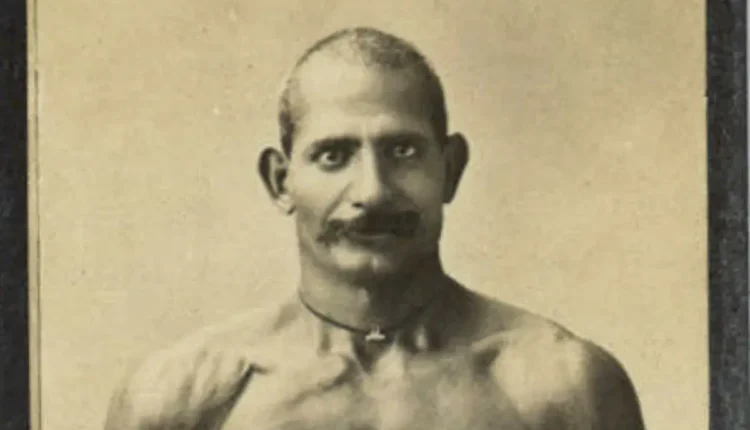In the early 1900s, when wrestling was a celebrated sport in Australia, a man of remarkable strength and unmatched skill emerged from the Punjab region of India. His name was Buttan Singh, a professional wrestler known for his catch-as-catch-can style.
Born in 1863, Buttan Singh’s journey from the fields of Punjab to the wrestling arenas of Australia represents not only physical prowess but the spirit of resilience, tenacity, and determination. Billed as one of the “champion Hindu wrestlers of Australia,” Singh’s story is one of breaking barriers, setting standards, and inspiring generations of athletes.
Buttan Singh: Early Life and Journey to Australia
Buttan Singh was born in Punjab, India, during the era of British colonial rule, a period marked by cultural, political, and economic transitions. His early years were spent honing his wrestling skills, influenced by the traditional form of Indian wrestling, known as pehlwani. This sport demanded a unique blend of strength, agility, and mental discipline, all qualities that Singh mastered over time.
In 1900, Buttan Singh arrived in Australia, a land distant from his birthplace but not alien to the concept of wrestling. It was a time when Indian immigrants were often labeled as ‘Hindoo,’ regardless of their actual religious background. Despite these misconceptions, Singh stood proudly as a Sikh, a faith that embodied courage and service, virtues he exhibited both in and out of the wrestling ring.
The Rise of a Champion
Upon his arrival in Australia, Buttan Singh quickly made a name for himself in the local wrestling circuits. His polite demeanor, contrasted with his dominating presence in the ring, earned him respect and admiration. Described as tall, wiry, and possessing a deep bronze complexion, Singh’s physical presence alone was enough to captivate audiences. Yet it was his wrestling technique, honed through years of rigorous training in India, that set him apart from his competitors.
Unlike some of his contemporaries, Singh carried himself with humility. Buttan Singh avoided boastful anecdotes, preferring to let his actions in the ring speak for him. Singh’s battles were not merely contests of strength but tests of skill and determination. His ability to grapple, lock, and throw opponents with finesse earned him victories over numerous wrestlers, cementing his status as one of the finest catch wrestlers of his time.
A Model for Future Generations
Buttan Singh wasn’t just a wrestler; he was a role model for the young athletes of his era. His disciplined lifestyle, dedication to the sport, and unwavering spirit inspired aspiring wrestlers across Australia and beyond. He was a symbol of how talent, coupled with hard work, could break through racial and cultural barriers. In a time when Indian immigrants faced significant discrimination, Singh’s achievements challenged the narrow perspectives held by many and redefined what it meant to be a champion in Australia.
One of the most notable aspects of Singh’s career was his association with Wirth Brothers Circus, where he performed as part of their athletic stable. The circus, known for its elaborate shows, provided a platform for Singh to showcase his wrestling talents to large audiences. His performances not only entertained but also inspired people from different backgrounds, as they saw an Indian man rise to prominence in a predominantly Western sport.
Memorable Matches and Rivalries
Throughout his career, Singh competed against some of the toughest wrestlers in Australia and internationally. His match against the German strongman William Pagel in 1900 is one of his most famous victories. Despite being slightly lighter than Pagel, Singh’s technical expertise outshone his opponent’s brute strength. The match, held in Melbourne, saw Singh defeating Pagel in a two-out-of-three falls contest, an event that is still remembered as a revival of wrestling in the region.
Another rivalry that defined Singh’s career was with Gunga Brahm, a fellow Indian wrestler who was also making waves in Australia. Their contests were not just about physical dominance but also carried undertones of cultural and religious significance, as Brahm, a Brahmin, and Singh, a Sikh, represented different strata of Indian society.
Their matches were thrilling spectacles, drawing large crowds and showcasing the clash of styles and strategies. Though Brahm would sometimes emerge victorious, Singh’s humility and sportsmanship left a lasting impression on the wrestling community.
Challenges and Triumphs
Buttan Singh’s career was not without challenges. In one infamous incident, Singh faced a riotous crowd after using a stranglehold against Clarence Weber, a much younger and heavier wrestler. Despite the controversy, Singh maintained his composure, continuing to compete with integrity and respect for the sport.
Singh’s willingness to take on stronger, heavier opponents demonstrated his fearless nature. He was known for using unconventional techniques, such as club swinging, to build his strength. His grip was legendary, attributed to swinging clubs weighing up to 100 pounds. This unique approach to training gave him an edge in the ring, allowing him to counter the power of even the most formidable opponents.
Also Read:Donald Trump Sparks Controversy With “Bad Genes” Comment on Immigrants

